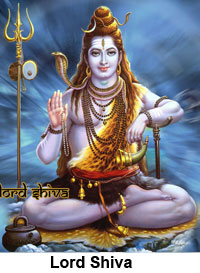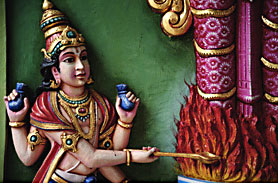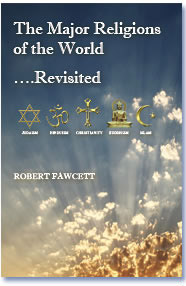| < Previous | Next > |
 Hinduism
Hinduism
Hinduism is the predominant religion of the Indian subcontinent. 
Hindu beliefs vary widely, with concepts of God and/or gods ranging from panentheism, pantheism, monotheism, polytheism, and atheism with Vishnu and Shiva being the most popular deities.
Other notable characteristics include a belief in reincarnation and karma, as well as personal duty, or dharma.
Among its roots is the historical Vedic religion of Iron Age India, and as such Hinduism is often stated to be the "oldest religious tradition" or "oldest living major tradition." It is formed of diverse traditions and types and has no single founder.
Hinduism is the world's third largest religion after Christianity and Islam, with approximately a billion adherents, of whom about 905 million live in India. Other countries with large Hindu populations can be found across southern Asia.
Hinduism's vast body of scriptures are divided into Sruti ("revealed") and Smriti ("remembered"). These scriptures discuss theology, philosophy and mythology, and provide information on the practice of dharma (religious living).
Among these texts, the Vedas and the Upanishads are the foremost in authority, importance and antiquity. Other major scriptures include the Tantras, the Agama, the Pura?as and the epics Mahabharata and Ramaya?a. The Bhagavad Gita, a treatise from the Mahabharata, spoken by Krishna, is sometimes called a summary of the spiritual teachings of the Vedas.
Top ^
Historical Roots of Hinduism
Hindu is the Persian name for the Indus River, first encountered in the Old Persian word Hindu (h?ndu), corresponding to Vedic Sanskrit Sindhu, the Indus River. The Rig Veda mentions the land of the Indo-Aryans as Sapta Sindhu (the land of the seven rivers in northwestern South Asia, one of them being the Indus). This corresponds to Hapta Hendu in the Avesta (Vendidad or Videvdad 1.18)—the sacred scripture of Zoroastrianism. The term was used for those who lived in the Indian subcontinent on or beyond the "Sindhu". In Islam the Arabic texts - al-Hind (the Hind) also refers to 'the land of the people of modern day India'.
The Persian term (Middle Persian Hinduk, New Persian Hindu) entered India with the Delhi Sultanate and appears in South Indian and Kashmiri texts from at least 1323 CE, and increasingly so during British rule. Since the end of the 18th century the word has been used as an umbrella term for most of the religious, spiritual, and philosophical traditions of the sub-continent, excluding the distinct religions of Sikhism, Buddhism, and Jainism.
The term Hindu was introduced to the English. It generally denotes the religious, philosophical, and cultural traditions native to India.
Types of Hinduism
Hinduism as we know it can be subdivided into a number of major currents. Of the historical division into six darshanas, only two schools, Vedanta and Yoga survive. The main divisions of Hinduism today are Vaishnavism, Shaivism, Smartism and Shaktism. The vast majority of present day Hindus can be categorized under one of these four groups, although there are many other, partly overlapping, allegiances and denominations.
McDaniel (2007) distinguishes six more generic "types" of Hinduism, in an attempt to accommodate a variety of views on a rather complex object:
- Folk Hinduism, as based on local traditions and cults of local deities at a communal level and spanning thorough to pre-historic times or at least prior to written Vedas.
- Vedic Hinduism as still being practiced by traditionalist brahmins, for example shrautins.
- Vedantic Hinduism, for example Advaita (Smartism), as based on philosophical approach of the Upanishads.
- Yogic Hinduism, especially based on the Yoga Sutras of Patanjali.
- "Dharmic" Hinduism or "daily morality", based on the notion of Karma, and societal norms such as Hindu marriage customs etc.
- Bhakti or devotionalism, especially as in Vaishnavism.
Top ^
| < Previous | Next > |




